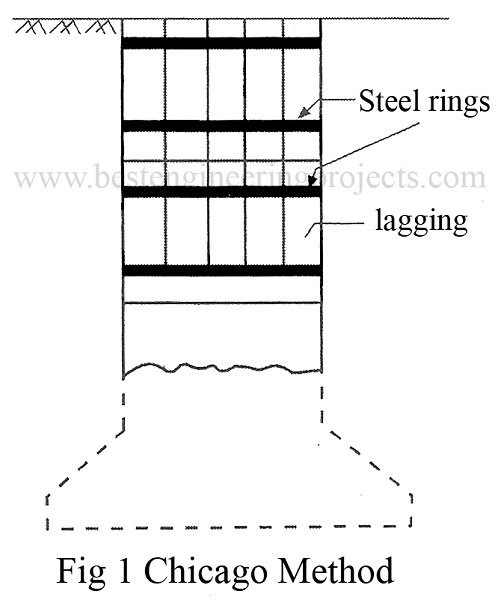The construction of pier consists of the following operations. They include excavation, placing of the concrete and inspection after construction. The excavation is done either manually or by machines. Manual excavation is done where the site is inaccessible to machines.
Manual Method | Construction of Piers
The manual methods which are in common use comprise:
- Chicago Method
- Gow Method
Chicago Method – Chicago method is used exclusively in clay. In this method a cylindrical hole is excavated to a depth of 0.6 m in soft clay and 1.8 m in stiff clay. The sides of excavation are trimmed accurately. Walls of excavation are lined with vertical board called lagging and are secured tightly with two steel rings as shown in Fig.1. After this the hole is deepened further to a depth of 0.6 to 1.8 m. Another set of lagging and rings are placed. When the excavation reaches to the required depth the hole is filled with concrete. The steel rings and laggings are left in place.
Problems – In homogeneous clay, the water will cause no problem and the bottom can be enlarged. In water bearing sands excavation problem is created due to sand blowing out. In such situation excavation shall be carried out under water in order to avoid ground loss.
Gow Method – In this method the sides of excavation are supported by a series of steel cylinders. The cylinders are driven with a light hammer while the soil is being excavated by hand. The lower cylinders are 5 cm less in diameter than the ones above it. After completion of the excavation, bottom is usually belled out and the cylinders are withdrawn one by one as the concrete is poured. This is shown in Fig. 2.

